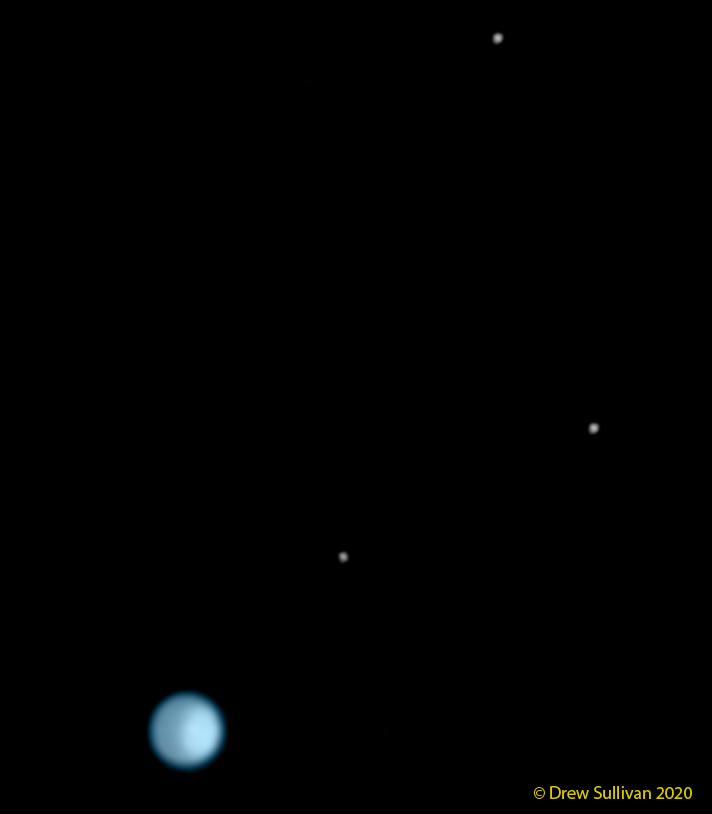| Uranus 2020-09-06 1038H UTC (Planet) 2020-09-23 0733H UTC (Moons) |
| Top |
| Celestron C14, 2.5x TV Powermate, ASI 174MM camera The planet was captured in NIR (Astronomik 685Nm filter), best 3000 of 4000 frames The moons were captured in Green (for better seeing than in Lum) Mouseover for names of moons. FireCapture for Capture (Highly Recommended) Autostakkert, and Registax6 for processing. |
| Although questionable findings of detail in the atmosphere of Uranus had been reported as early as the 1880s, the first confirmed features were imaged by the Voyager 2 flyby in 1986. Amazingly detail can now be captured by amateur ground based telescopes. This image would not have been possible without the very useful tips in an article in by Martin Lewis in The Sky at Night: |
| Below are some of the steps in processing. Color was added to the IR image of the planet "for aesthetic purposes" chosen to match true-color spacecraft images of Uranus. The original NIR image was obviously gray-scale. |

| There is a prominent white dome on one side of the image. That is at the north pole of Uranus. Most planets spin on an axis roughly at right angles to the plane of their orbit so the north pole is always "up". Uranus lies on its side, its poles almost parallel to the plane of its orbit, Because of this unusual tilt Uranus spends about 1/4 of its 84 year orbit with the north pole pointed towards the sun. The north pole then gets continuous sunlight for years. For 1/4 of its orbit the north pole points away from the sun and is in darkness (during which time the south pole points towards the sun), Between those extremes the poles are more or less parallel to the sun, so the sunlight is more evenly distributed. We don't know for certain why the polar region is white, but it like is due to some combination of heating or different chemical reactions during the time it receives so much sunlight. |
